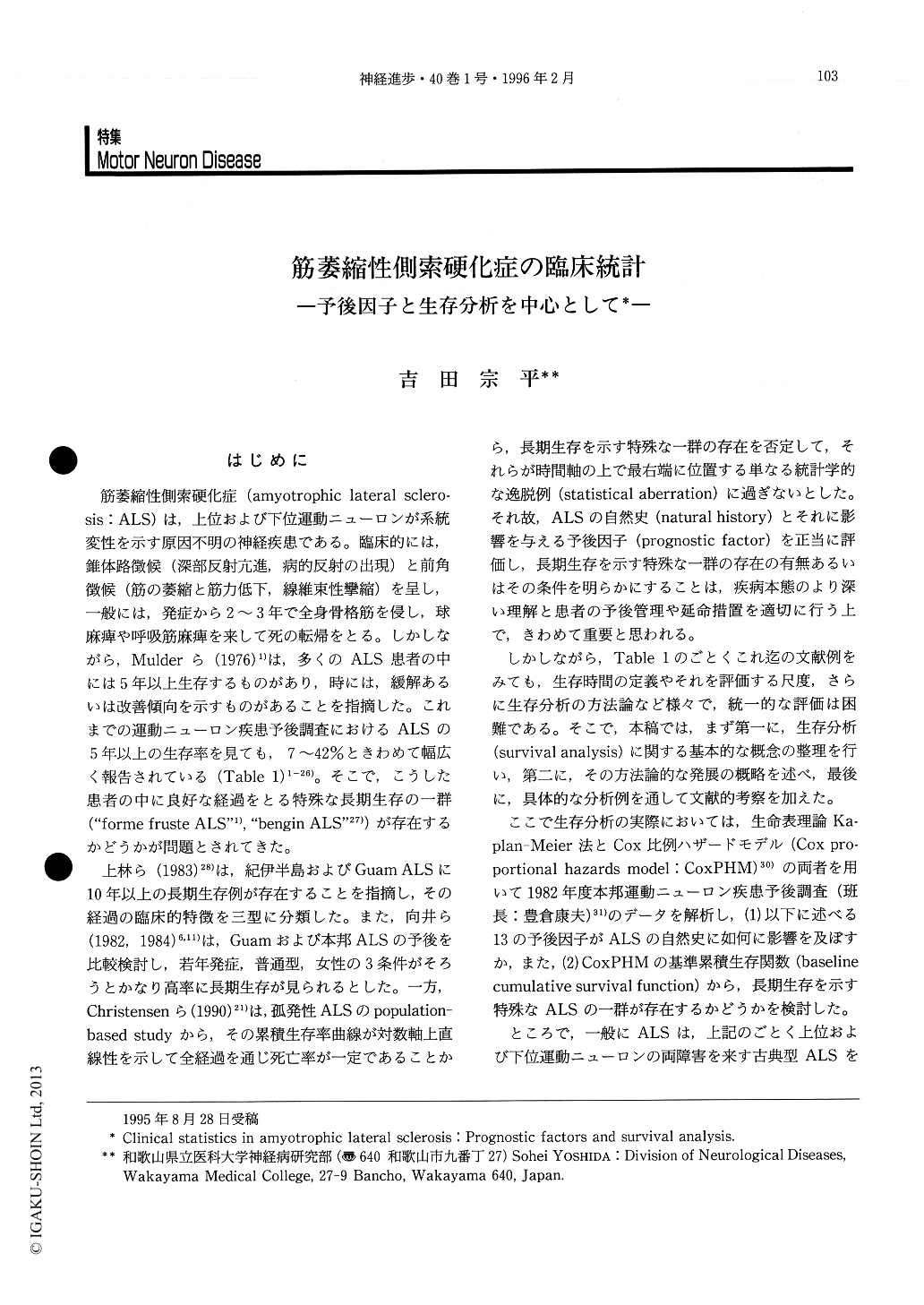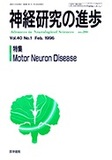Japanese
English
- 有料閲覧
- Abstract 文献概要
- 1ページ目 Look Inside
はじめに
筋萎縮性側索硬化症(amyotrophic lateral sclerosis:ALS)は,上位および下位運動ニューロンが系統変性を示す原因不明の神経疾患である。臨床的には,錐体路徴候(深部反射亢進,病的反射の出現)と前角徴候(筋の萎縮と筋力低下,線維束性攣縮)を呈し,一般には,発症から2~3年で全身骨格筋を侵し,球麻痺や呼吸筋麻痺を来して死の転帰をとる。しかしながら,Mulderら(1976)1)は,多くのALS患者の中には5年以上生存するものがあり,時には,緩解あるいは改善傾向を示すものがあることを指摘した。これまでの運動ニューロン疾患予後調査におけるALSの5年以上の生存率を見ても,7~42%ときわめて幅広く報告されている(Table 1)1-26)。そこで,こうした患者の中に良好な経過をとる特殊な長期生存の一群(“forme fruste ALS”1),“bengin ALS”27))が存在するかどうかが問題とされてきた。
上林ら(1983)28)は,紀伊半島およびGuam ALSに10年以上の長期生存例が存在することを指摘し,その経過の臨床的特徴を三型に分類した。また,向井ら(1982,1984)6,11)は,Guamおよび本邦ALSの予後を比較検討し,若年発症,普通型,女性の3条件がそろうとかなり高率に長期生存が見られるとした。
Amyotrophic lateral sclerosis (ALS) is generally a fatal disease with a life expectancy two to three years after onset. Mulder (1976) has, however, pointed out that many patients live for longer than 5 years and occasionally, show remissions or recovery. In several studies, survival for more than 5 years occurs in 7 to 42% of the patients. This raises the question as to whether there is a subgroup of patients with a more benign course of the disease. Based on a population-based study, Christensen et al. (1990), however, found no evidence of the existence of such a long surviving variety of ALS.

Copyright © 1996, Igaku-Shoin Ltd. All rights reserved.


